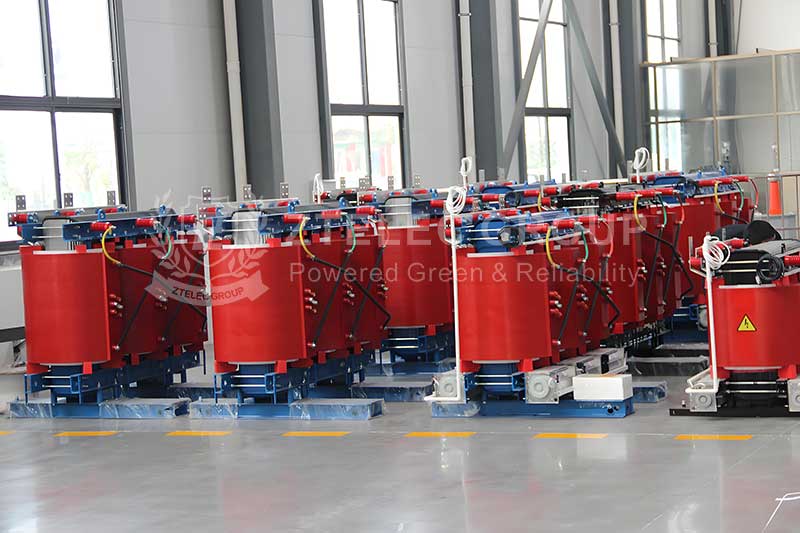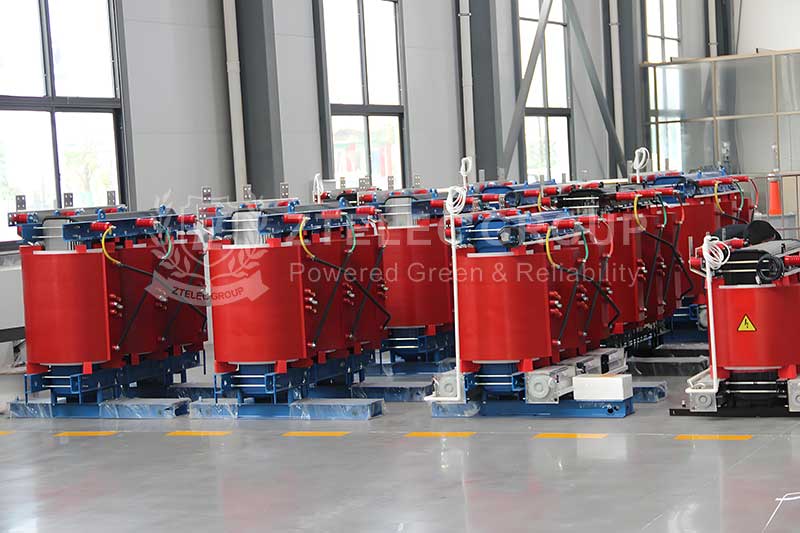How does a transformer increase voltage?
A transformer is an electrical equipment. Its core function is to achieve the increase or decrease of voltage through the principle of electromagnetic induction without changing the alternating current frequency.
The basic principle of a transformer
The basic principle of a transformer is to use mutual inductance to achieve power transmission. When one side of a transformer is energized, an alternating magnetic field is established in its windings. Since the magnetic field lines are connected, this magnetic field will also pass through the windings of the transformer and produce a voltage. When a conductor in the winding on the other side approaches, it will be affected by the magnetic field of the transformer, thereby generating an induced electromotive force, causing current to flow. In this way, the transmission of electrical energy is achieved.

How does a transformer increase voltage?
The working principle of the transformer to increase the voltage is mainly based on the law of electromagnetic induction and the relationship between the turns ratio of the transformer.
1. The law of electromagnetic induction
The transformer works on the principle of electromagnetic induction. When AC current passes through the primary coil of the transformer (also known as the primary coil or input coil), an alternating magnetic flux is created in the core. This alternating magnetic flux passes through the core and senses the secondary coil (also known as the secondary coil or output coil), creating a new alternating voltage in the secondary coil.
2. Turn ratio relationship
The variation of voltage in a transformer is directly related to the ratio of turns between the primary and secondary coils. The turn ratio (N) is defined as the ratio of the number of turns (Ns) of the secondary coil to the number of turns (Np) of the primary coil, that is, N = Ns/Np.
Boost process: In order to increase the voltage, the number of turns in the secondary coil must be greater than the number of turns in the primary coil. According to the law of electromagnetic induction and the turn ratio of the transformer, the ratio of the output voltage (Vout) to the input voltage (Vin) is equal to the turn ratio, that is, Vout/Vin = Ns/Np. Therefore, when Ns > Np, the output voltage will be higher than the input voltage, achieving an increase in voltage.
3. Energy transfer and conversion
In a transformer, energy is transferred from the primary coil to the secondary coil through a magnetic field, rather than directly through the wire. This non-contact mode of energy transfer allows the transformer to efficiently raise or lower voltage while providing electrical isolation. In the boost process, the input electrical energy is converted into magnetic energy and passed through the magnetic field to the secondary coil, which is then converted into output electrical energy.

Practical application
Step-up transformers have a wide range of applications in power systems, especially in long-distance transmission and substation boost. Through the step-up transformer, the low voltage generated by the power plant can be increased to meet the needs of long-distance transmission, thereby reducing line losses and improving transmission efficiency. At the same time, the step-up transformer in the substation can also increase the voltage transmitted to the substation to meet the needs of urban and industrial electricity.
Therefore, the working principle of the transformer to increase the voltage is based on the law of electromagnetic induction and the relationship between the number of turns of the transformer. By adjusting the ratio of turns between the primary coil and the secondary coil and using the magnetic field for energy transfer and conversion, the transformer can achieve voltage increase.
- more+releated article
- 2025-12-13How to Select and Use Phenolic Cloth-base Lami
- 2025-12-13How Much Does Bakelite Sheet Cost? 2025 Price
- 2025-12-13Why are most 3240 epoxy boards yellow?
- 2025-12-13What are the Main Applications of FR4 Epoxy Bo
- 2025-12-13Why Does the Price of Insulating Paperboard Va
- 2025-12-13Heat-Resistant DDP Insulation Paper
- 2025-12-13Comparison of Heat-Resistant DDP Insulating Pa
- 2025-12-13G10 and FR4 Epoxy Boards: Commonly Used for Ge
- 2025-12-13The Price of Heat-Resistant DDP Insulation Pap
- 2025-12-13How to Choose Epoxy Laminate Materials for Gen





